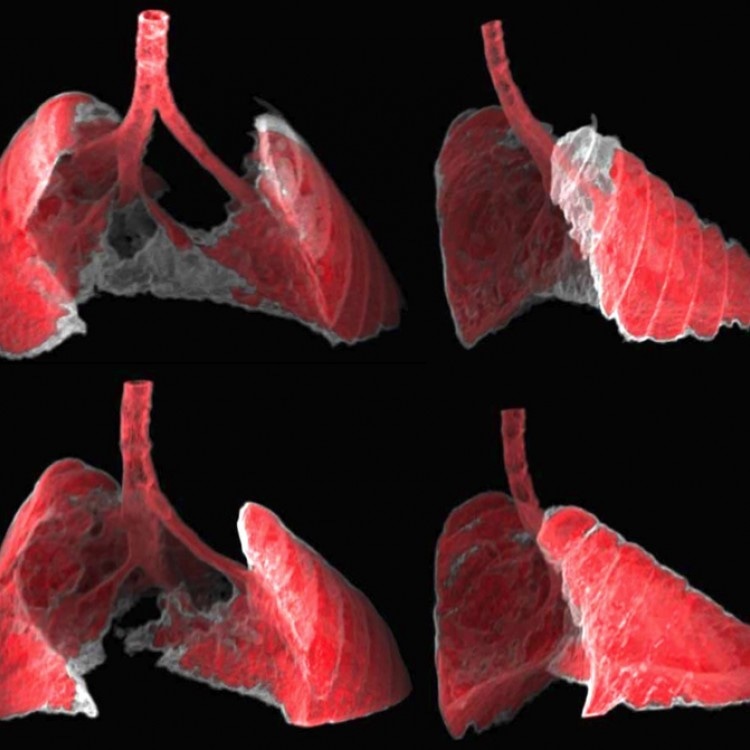Jul 27 2018
Senescent cells are damaged cells that no longer perform their regular roles but that are not dead - hence they are typically known as zombi cells. These cells obstruct the working of the tissue in which they accumulate. Senescence is a cell program that is activated by various types of damage and senescent cells are present in a number of diseases. They accumulate in several types of tissues during aging, thus contributing to the progressive decline linked with aging. Removing these zombi cells is one of the challenges that science needs to tackle today.
 The figure shows two views, frontal and lateral, of the image obtained by CT of the lungs of a mouse with fibrosis (grey areas) before and after receiving nano-therapy directed at senescent cells. (Guillem Garaulet and Francisca Mulero, CNIO)
The figure shows two views, frontal and lateral, of the image obtained by CT of the lungs of a mouse with fibrosis (grey areas) before and after receiving nano-therapy directed at senescent cells. (Guillem Garaulet and Francisca Mulero, CNIO)
In the Cellular Plasticity and Disease lab headed by the ICREA scientist Manuel Serrano at the Institute for Research in Biomedicine (IRB Barcelona) and supported by “la Caixa” Banking Foundation, the scientists devise various approaches to eliminate senescent cells. In a research published in EMBO Molecular Medicine, they introduce a proof of principle of a drug delivery system with selectivity for tissues that contain senescent cells.
In partnership with a team headed by Ramón Martínez-Máñez at the Universidad Politécnica de Valencia, the IRB Barcelona researchers have manipulated a specific hallmark of senescent cells so as to design a delivery system that precisely targets them. They have shown its effectiveness in cells in vitro and in two experimental mouse models, i.e. cancer pulmonary and fibrosis. These diseases are characterized by the existence of damaged cells, and in the case of cancer, this is specifically true after treatment with chemotherapy.
In these models, the senescent cells take up the carrier in a better manner compared to other cells and once within the cell, the casing of the carrier degrades to discharge the drug cargo. When the nano-vehicles had cytotoxic compounds, the senescent cells were destroyed and this brought about therapeutic enhancements in mice with cancer or with pulmonary fibrosis.
“This nano-carrier may pave the way for new therapeutic approaches for serious conditions, such as pulmonary fibrosis or to eliminate chemotherapy-induced senescent cells,” explains Manuel Serrano. Another result of this research is that these nano-carriers could be employed for diagnostic tests of senescence as they can carry a fluorescent compound or marker.
This research, performed by IRB Barcelona in partnership with the Universidad Politécnica de Valencia, CNIO, the University of Cambridge, CIBER-BBN, and the company Pfizer in the US, is a step towards realizing the capacity to eliminate senescent cells. Designing tools to specifically remove senescent cells is presently a crucial goal for many pharmaceutical companies, among them the one founded by Manuel Serrano himself along with Ramón Martínez-Máñez and José Ramón Murguia, Senolytic Therapeutics, which is situated at the Barcelona Science Park and in Boston.
The research has been sponsored by “la Caixa” Banking Foundation, the Botín Foundation, the European Research Council, CRUK Cambridge Centre Early Detection Programme, the Ministry of Economy and Competitiveness/ERDFs and the Catalan Government.